|
What do you call a group of black men with guns? A gang! What do you call a group of white men with guns? A militia! To put it mildly, this has been a difficult summer. The pandemic continues unabated, the country has endured devastating flooding down south and historic wild fires out west, and protests against racial injustice continue in several U.S. cities. Many of these protests have devolved into ugly and violent confrontations between protestors, law enforcement and counter-protestors. What really disturbed me was the presence of armed members of militia groups at several of the protests. Watching heavily armed men, who were not authorized law enforcement agents, patrolling the streets of America left me with a sense of foreboding. My fears were realized last month when a 17- year old boy with an automatic weapon, shot and killed two people at a protest in Kenosha, Wisconsin. After my outrage began to subside, it got me thinking about the militia movement and its legitimacy. Are these groups legal and what exactly constitutes a militia? History of Militias in America: Militias have existed in America since colonial times. We all remember the Minutemen who confronted British soldiers in the years leading up to the Revolutionary War. The definition of what a militia is, as defined by Congress, has changed over time. In colonial times a militia represented a military force raised from the civilian population, for the common defense of the community. Militias were distinct from professional soldiers, and were generally organized around towns, regions, or colonies. Militias are enumerated in Article 1, Section 8 of the U.S. Constitution. Clause 15 grants Congress the power “To provide for calling forth the militia to execute the Laws of the Union, suppress Insurrections and repel Invasions”. Clause 16 grants Congress the power “To provide for organizing, arming, and discipling the militia, and for governing such Part of them as may be employed in the Services of the United States, reserving to the States respectively, the Appointment of the Officers, and the Authority of training the Militia according to the discipline prescribed by Congress”. Even before the ratification of the Constitution in 1788, we learned about the intentions of these “Militia Clauses” from the Federalist Papers. The Federalist Papers were authored mainly by Alexander Hamilton and James Madison, and were published in New York newspapers to promote the ratification of the Constitution. Hamilton dedicated Federalist No. 29 to the issues concerning the militia. The founding fathers feared that a standing army would be used by a tyrannical government to suppress the liberties of the citizens. But they needed to provide for the common defense. They saw state militias as a necessary compromise. Militias are “the only substitute that can be devised for a standing army, and the best possible security against it, if it should exist”, (https://guides.loc.gov/federalist-papers/text-21-30). The 2nd Amendment to the Constitution was adopted in 1791. It states “A well regulated Militia, being necessary to the security of a free State, the right of the people to keep and bear Arms, shall not be infringed”. The “Militia Act of 1792” stipulated that the militia would consist of each and every able-bodied white male citizen of the respective States, who is at least 18 years of age and under the age of 45. No other major legislation concerning militias was passed until the “Militia Act of 1903”, which repealed the Act of 1792. The 1903 Act divided the militia into two classes; the “Organized Militia”, which was the National Guard, and the “Unorganized Militia”, which was the reserve militia consisting of all male citizens of at least 18 years of age and below the age of 45. The Act offered federal funds to each state to train and equip its National Guard and set policies and procedures for training. The president was empowered to call up the National Guard for up to nine months to repel invasion, suppress rebellion, or enforce federal laws. The federal government was not allowed to order the National Guard to serve outside of the United States. The “Militia Act of 1908” removed the nine-month limit on federal service, and gave the president the authority to set the length of service. In the lead up to the United States’ involvement in World War I, the “National Defense Act of 1916” was passed. It gave the federal government more control over the National Guard. Guardsmen were now required to take both state and federal oaths of enlistment. When called to active duty by the federal government, Guardsmen were relieved of their status in the State Militia and were federalized to operate outside of the United States. The 1916 Act was amended in 1933 to create a reserve component of the United States Army called the “National Guard of the United States”. Since then, all National Guardsmen (and women) have been members of both their State National Guard and the National Guard of the United States. Modern Militia Movement: This country was built on the blood, sweat, and tears of rugged individualists. Their founding principles revolved around individual rights, personal freedoms and civil liberties. These founding principles are held dear by most Americans, but seem to motivate some people to extremes. This is the case with many antigovernment groups. “Antigovernment” is a broad category of groups tracked by the FBI and civilian organizations such as the Southern Poverty Law Center (SPLC). Some groups are racist, some are hate groups, some are white nationalists, and some are militias. There are some groups that just want to be left alone, like survivalist groups, and members of various “Sovereign Citizens” groups. There are armed “Insurrectionists” intent on anarchy or over-throwing the government. There are right-wing “Patriot” groups who see themselves as protectors of the Constitution, and the last defense against an overreaching government. There are militia groups made up of all races and creeds. But most militia groups fall into the far-right Patriot category. The modern American militia movement has been fed by white supremacy, conspiracy theories and bigotry. The main thrust of these theories is that the federal government is controlled by a mysterious elitist cabal which plans to take away Americans’ guns, overthrow local governments and install martial law over citizens. Another motivating theme is that the left is trying to flood America with immigrants who will vote Democrat and upset the balance of power. The real danger of these groups has been their support of racist and violent causes. They are highly visible at white supremacist rallies and frequently act as counter-protestors at Black Lives Matter marches. Several militia members have been convicted in recent years of acts of violence against Muslims and destruction of mosques. There have always been militia groups in America operating on the fringes of society. Two key events have sparked the modern militia movement. The first was the 1992 armed standoff between Randy Weaver and US Marshalls at his compound in Ruby Ridge, Idaho. Weaver was a white supremacist who was being served a warrant for weapons violations. An armed confrontation ensued, resulting in the deaths of Weaver’s wife and son, and a US Marshall. The other incident was the 1993 raid by federal agents on the Branch Davidian compound in Waco, Texas. The raid went terribly wrong, resulting in a 51-day siege, leaving 76 people dead. These two incidents fueled the view that the government was out of control. According to the SPLC, antigovernment groups peaked around 1996 at over 860. The 1996 bombing of the Oklahoma City Federal Building killed 168 people. This heinous crime was perpetrated by Timothy McVeigh who had ties to a Michigan militia group. The national spotlight on this event precipitated a decline in the militia movement. Over the following decade the number of active militia groups declined from 441 to 35 according to the SPLC. The election of Barack Obama in 2008 saw a resurgence in the militia movement. This was spurred on by the racist “birther” movement which questioned Obama’s legitimacy, and out of fear that the government would begin to confiscate guns. The two largest and well-known militias in the country, “The Three Percenters” and the “Oath Takers” were started around this time. The Three Percenters was started by Mike Vanderboegh, a gun rights activist from Alabama. It is named for the dubious theory that during the Revolutionary War only three percent of Americans took up arms against the British. It is a loosely affiliated group active in most states with no formal leadership structure. According to their website (thethreepercenters.org), their goal is “to utilize the fail safes put in place by our founding fathers to rein in an overreaching government and push back against tyranny. We are working to preserve the intent of our government as designed”. The Oath Keepers was founded by Stewart Rhodes, a Yale Law School graduate and former U.S. Army paratrooper. According to their website (oathkeepers.org), it is a non-partisan association of current and former military, police, and first responders who pledge to keep and fulfill the oath to “defend the Constitution against all enemies, foreign and domestic”. Oath Keepers pledge to defend the Constitution above all else, and follow the group’s orders and bylaws over those of elected officials and the agencies which employ them. Oath Keepers mostly recruit from the ranks of the military and law enforcement because they have weapons and tactical training. Those without military or law enforcement experience may join as associate members to support the cause. The Oath Keepers has a structured organization with leadership at the national, state, and local levels. It hopes to create a network of militias across the country. The group’s moto is “Not on Our Watch”. Their websites describe these groups in reasonable terms, but they are very active and well known to the FBI and law enforcement agencies in all 50 states. These groups provide the justification for members to take the law into their own hands, often at gun point, as we have seen at the border and during Black Lives Matter protests. Many militia group members adhere to the beliefs of the QAnon conspiracy theory. Here is a link to my post on QAnon in case you didn’t read it: (https://armchairamerican.com/blog/qanon-what-is-it-and-should-we-care). In the QAnon theory, Donald Trump is a lone heroic warrior, elected to defeat the deep state. It appears as if Donald Trump is the one government official that the antigovernment movement can get behind. The president’s anti-immigrant rhetoric and his border policies feed right into the philosophies that motivate many of these groups. To make matters worse, the president refuses to condemn the right-wing extremism we have witnessed. His lack of condemnation of the violence in Charlottesville in 2017 is a prime example of this. To this day he blames all of the violence at Black Lives Matter protests on “antifa”, when the majority of it has been caused by right-wing movements (https://www.npr.org/2020/09/02/908347989/former-dhs-official-white-house-failed-to-take-far-right-extremism-seriously). Are Private Militias Legal: Private or citizen militias are armed military groups composed of private citizens and they are not recognized by federal or state governments. Some states ban private militias outright, but all fifty states have some provision in their state law that prohibits private military and paramilitary activities. Forty-eight states have constitutional provisions requiring all military activities, private or otherwise, to fall under the control of civil authorities. Twenty-nine states have statues that prohibit the formation of private military units without the authorization of the state government. These statues specifically prohibit such groups from parading or drilling in public with firearms. Twenty-five states have statues that criminalize certain paramilitary activity, such as training others in the use of firearms or explosives for the purpose of creating civil disorder. Most states have laws against “false assumption”. This includes assuming the duties of a law enforcement agent, and the unauthorized wearing of military uniforms. In recent years we have seen many of these laws violated at the southern border, at right-wing rallies, and at Black Lives Matter protests. These laws were put in place to prevent the type of chaos and violence witnessed at the 2017 Unite the Right rally in Charlottesville, Virginia. The rally attracted many heavily armed militia groups dressed in military fatigues. These groups purported to be acting in the role of “peace keepers”, in violation of Virginia state laws. All summer we have witnessed protests in the wake of the killing of George Floyd. Many of these protests were met by counter-protestors from private militia groups dressed in military gear and carrying assault rifles. These groups claimed to be keeping the peace and protecting private property. This put them in violation of state “assumption laws”. Beyond being illegal, these activities have led to deadly shootings in Portland, Oregon and Kenosha, Wisconsin.
For a complete list of the laws governing private militias in all 50 states, Georgetown University has a comprehensive review: (https://www.law.georgetown.edu/icap/wp-content/uploads/sites/32/2018/04/Prohibiting-Private-Armies-at-Public-Rallies.pdf). Militia groups are active in all fifty states and membership is in the tens of thousands. The number of militias peaked in 2011 at 334, and in 2019 there were 181 active militia groups being tracked by the Intelligence Project of the Southern Poverty Law Center (https://www.splcenter.org/fighting-hate/extremist-files/ideology/antigovernment). Militia groups have an idealized view of America, one that reflects the spirit of the Constitution, and their actions are justified by patriotism. These groups portray themselves as innocent neighborhood watch type groups, but they are not. The FBI considers well-armed militias to be a significant threat, and members of these groups have participated in a number of acts of domestic terrorism. We have a president who refuses to condemn these groups because many of their members are part of his political base. Acts of violence continue to occur at legitimate protest marches, and we are a few short weeks away from a very contentious presidential election. President Trump is doing his darndest to cast doubt on the integrity of the upcoming election. He views voting by mail as fraudulent and has stated that the only way that Joe Biden can win is by fraud. But we have heard this tune before. Before the 2016 election, Trump accused the Democrats of “rigging” the election and told his supporters to be on the lookout for voter fraud. The Oath Keepers heard this as a “call to action” and asked its members to station themselves at polling places around the country to “help prevent criminal fraud and attempted criminal voter intimidation on election day”. Are we in for a repeat in 2020? Unfortunately, I think we are. The presence of any outside groups at polling places, particularly armed groups, is voter intimidation pure and simple. We need to be aware of it and bring it to the attention of law enforcement if we witness it. I don’t even want to think about what could happen if Donald Trump feels that the election is stolen from him. We also need to make sure that our local law enforcement agencies are enforcing the laws which regulate militia group activities at protests and rallies. These groups claim to be protecting the streets for the citizens of the country, but I see it differently. If you enjoy reading this type of commentary please subscribe to my blog and tell a friend. You will receive an email notification when new blogs are posted. The email will come from the site’s email: [email protected]. Thanks, Armchair American
2 Comments
QAnon is a story that involves the dark web, secret cabals, cryptic messages, biblical prophecies, digital warriors, diabolical villains, conspiracy theories, and presidential politics. Some have called QAnon a cult, a political movement, a burgeoning new religion, and the conspiracy theory du jour. In some respects, it could be any, or all of those things. Or it could be a fantastical experiment of mass manipulation by a rogue social scientist, or rogue state. So, what is it and why should we care? QAnon has induced acts of violence and made its way into national politics, and therefore it warrants our attention. What is QAnon: An “anon” is a person posting on the internet anonymously. “Q” is an unknown person or persons who claims to have a Top Secret “Q clearance” in the government. We first heard from the anonymous Q with a cryptic post on October 28, 2017 on a forum thread called “Calm Before the Storm”, on the website “4chan”. 4chan lives on the fringes of the internet where anonymity rules, and conspiracy theories and illicit activities run rampant. The QAnon conspiracy theory appears to have morphed out of several other “anon” postings, such as “FBIAnon”, “CIAAnon”, “WH Insider Anon”, and “High Level Insider Anon”. These posters were all pro-Trump, and perpetrated many false claims and derogatory comments about Hillary Clinton in the runup to the 2016 presidential election. During October 2016, websites such as 4chan helped to spread the conspiracy theory known as “Pizzagate”. In case you have forgotten about this little piece of hilarity, it was a far-right theory that Hillary Clinton was running a child sex ring out of the basement of a pizzeria called Comet Ping Pong. This theory got a lot of buzz on the far reaches of the internet and has never gone away. The QAnon theory contends that a secret shadow government, known as the “deep state”, is controlled by Hillary Clinton, Barack Obama, George Soros, and a cabal of global liberal elites. According to the theory, the deep state runs a global child sex trafficking ring, and practices satanism, cannibalism and other evils. Sound plausible? In the QAnon theory, Donald Trump is a lone heroic warrior, elected to defeat the deep state. It is up to the mysterious Q to tell the world about Trump’s top-secret war against the deep state, and to rally support behind the president. The eventual destruction of the global cabal can only be accomplished with the support of patriots who search for meaning in Q’s clues (Q Drops). Q has posted over 2000 times to the image boards of 4chan, 8chan, and 8kun. 8 chan was shut down for promoting violence and misinformation, and now most of Q’s posts appear on the website 8kun. Investigative journalists from NBC News dug into the origins of Q and QAnon. (https://www.nbcnews.com/tech/tech-news/how-three-conspiracy-theorists-took-q-sparked-qanon-n900531). The investigation determined that three people took the original Q post and expanded it across multiple platforms to build internet followings for profit. This seems to me to be the most likely scenario. The three individuals involved deny this, and the identity of the original Q remains a mystery. QAnon Philosophy: QAnon rejects mainstream institutions, ignores government officials (they are corrupt), despises mainstream media for spreading “Fake News”, and champions unfettered free speech on the internet. Some of Q’s favorite topics include God, Pizzagate, the wickedness of the elite, the mass hysteria over the coronavirus (promoted by the Democrats to dethrone President Trump), and Dr. Fauci (a deep state puppet). The rallying cry for QAnon followers is “WWG1WGA” (where we go one, we go all). It’s an expression of solidarity which celebrates unity and patriotism. Other favorite Q themes that followers have rallied around include:
QAnon followers are not a simple homogeneous group, and the motives of its adherents are divergent. The many twists and turns to the theory have appeal to many, particularly conspiracy theorists. But most followers are clearly right-wing and pro Trump. One major group of followers focuses on the religious aspects of QAnon. In the language of evangelical Christians, Q quotes bible verses and promotes the Great Awakening. The other major group of followers clings to the notion of the deep state, with Q being a government insider helping Trump to defeat it. They see significance in words beginning with the letter Q spoken or tweeted by Donald Trump. According to Jared Holt, a researcher for Right Wing Watch, the QAnon theory “provides Trump’s most fervent supporters a way to explain away any scandal or slip-up the president may face”. Even typo filled tweets and incoherent rambles are viewed as proofs that the president is in on the conspiracy. It solidifies a portion of Trump’s base that will not be swayed by anything that he says or does. QAnon Goes Mainstream: Q may be anonymous, but the QAnon movement certainly isn’t. In a few short years QAnon has grown from a few fringe chat rooms and message boards to nearly every major social media and commercial platform on the internet. It encompasses a massive international universe of blogs, proprietary websites, podcasts, and all the mainstream social media platforms, including Redditt, Twitter, YouTube, Instagram, TikTok and Facebook. According to an investigation conducted by NBC News, Facebook has been key to QAnon’s growth, mainly through its “Groups” feature. A recent internal Facebook investigation has uncovered thousands of groups and pages, with millions of members and followers that support QAnon. (https://www.nbcnews.com/tech/tech-news/qanon-groups-have-millions-members-facebook-documents-show-n1236317). QAnon is not just active in the United States. According to an investigation by the Guardian, there are active groups of QAnon followers all over Europe, Australia, South America, Canada, Mexico, and several of the former Soviet bloc countries. (https://www.theguardian.com/us-news/2020/aug/11/qanon-facebook-groups-growing-conspiracy-theory). Along with the massive social media presence, entrepreneurs are cashing in on the QAnon movement. Many are generating revenue from their podcasts, YouTube channels, apps, books, newsletters, and social media platforms dedicated to QAnon. There are others selling millions of dollars worth of Q and QAnon branded merchandise online and at right-wing campaign rallies. Just Google “QAnon merchandise” and you’ll find your pick of hats, T-shirts, belt buckles, coffee mugs, buttons, stickers, and baby bibs! QAnon gets a Political Endorsement: August 19, 2020 will hold a special place on the QAnon calendar going forward. President Trump has occasionally retweeted posts from QAnon affiliated accounts, but this is the first time that he directly responded to questions about QAnon. At a news conference, the president was asked about the QAnon movement, to which he responded, “I don’t know much about the movement, other than I understand they like me very much; which I appreciate.” He went on to say that “I heard these are people who love our country.” When told by the reporter the basic premise behind the QAnon theory, the president responded by asking “Is that supposed to be a bad thing or a good thing? If I can help save the world from problems, I’m willing to do it. I’m willing to put myself out there. And we are actually saving the world…” As you can well image, within minutes QAnon affiliated social media accounts across the world came to life to celebrate Trump’s comments as validation of their views. (https://apnews.com/535e145ee67dd757660157be39d05d3f). QAnon supporters have been showing up at Trump rallies since 2018. But only in recent months has their political influence been felt. According to Brian Dunning of the “Skeptoid Podcast”, at least 60 candidates running for Congress had expressed their belief that QAnon is real. Last week QAnon adherent and self-described Islamophobe Laura Loomer, won the GOP nomination for Florida’s 21st Congressional District. Earlier this month Marjorie Taylor Green won the GOP nomination for Georgia’s 14th Congressional District. Ms. Green is a vocal supporter of QAnon and has racist views condemned by many mainstream Republicans. (https://www.washingtonpost.com/politics/2020/08/11/marjorie-taylor-greene-georgia-qanon/ ). Both women received praise and congratulations for their victories by President Trump. As the politics of QAnon goes mainstream, there are thousands of digital soldiers behind the scenes using social media and fringe message boards to wage information warfare. They are intent on influencing the 2020 elections to keep Donald Trump in power. How many of these QAnon social media accounts do you think are run by trolls controlled by the Russian government? Many I would suspect. The Darkside: Yahoo News disclosed the existence of an FBI intelligence bulletin, dated May 30, 2019, which described conspiracy theory-driven domestic extremists as a growing threat. (https://news.yahoo.com/fbi-documents-conspiracy-theories-terrorism-160000507.html). One of the prominent conspiracy theories mentioned in the bulletin was QAnon. The bulletin warns that these conspiracy theories may very likely motivate some domestic extremists to engage in criminal or violent behavior. So, what landed QAnon on the FBI domestic terrorism bulletin? The FBI cited a number of arrests related to QAnon in which death threats and acts of violence were involved. These included an armed stand off between Matthew Phillip Wright and police at the Hoover Dam, and the murder of mob boss Frank Cali at the hands of a QAnon follower. Several social media platforms have been pushing back against QAnon affiliated groups since 2018. Reddit banned several QAnon groups from its platform in 2018 for inciting violence, harassment, and the dissemination of personal information. In July of this year Apple pulled the very popular app “QDrops” from the App Store after it learned more about the conspiracy theory. On July 21, 2020 Twitter announced that it was banning over 7,000 QAnon accounts for breaking its rules around platform manipulation, misinformation and harassment. This is the strongest action yet against QAnon, and Twitter stated that it would no longer recommend QAnon accounts and content, stop such content from appearing in trends and search, and would block QAnon internet links. (https://www.nbcnews.com/tech/tech-news/qanon-groups-have-millions-members-facebook-documents-show-n1236317). In July TikTok disabled the two most popular QAnon hashtags on its platform. But Facebook is the elephant in the room when it comes to the spread of QAnon. It removed a few accounts and groups in May for “suspected coordinated inauthentic behavior” ahead of the 2020 presidential election. This week Facebook announced that it will restrict QAnon (and other right-wing groups) and will no longer recommend that users join groups supporting it. Short of an outright ban, Facebook said it will only remove groups and accounts outright if they discuss potential violence. Facebook said it is not banning QAnon because the group does not meet rigorous criteria for the platform to designate it a “dangerous organization.” But it is expanding this policy to address the movement because it has “demonstrated significant risks to public safety.” (https://www.latimes.com/world-nation/story/2020-08-19/facebook-bans-some-but-not-all-qanon-groups-accounts ). So for now, QAnon will continue to proliferate on Facebook and Instagram (owned by Facebook). As one account is shut down others pop up somewhere else on the internet, and this is the key to its growth. There is a lot more to the QAnon story. Who is this mysterious Q character? How did the QAnon conspiracy theory explode in just a few short years? Who believes in this stuff and why? Most importantly, why doesn’t President Trump distance himself from QAnon, and how much influence will it really have on the upcoming election? From its humble beginnings as a scheme to garner internet traffic, millions of like-minded people have found a rallying point in QAnon.
For a deep dive into the origins of QAnon and who the mysterious Q may be, I refer you to articles referenced above by the NBC News investigative team and the article from The Atlantic. If you enjoy reading this type of commentary please subscribe to my blog and tell a friend. You will receive an email notification when new blogs are posted. The email will come from the site’s email: [email protected]. Thanks, Armchair American |
AuthorThe Armchair American. Archives
November 2024
Categories
All
|





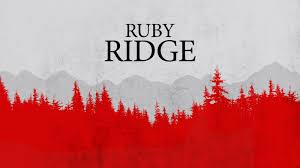



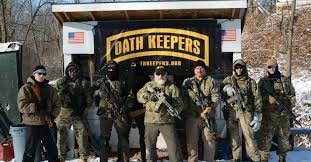



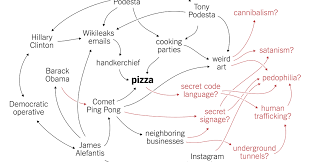

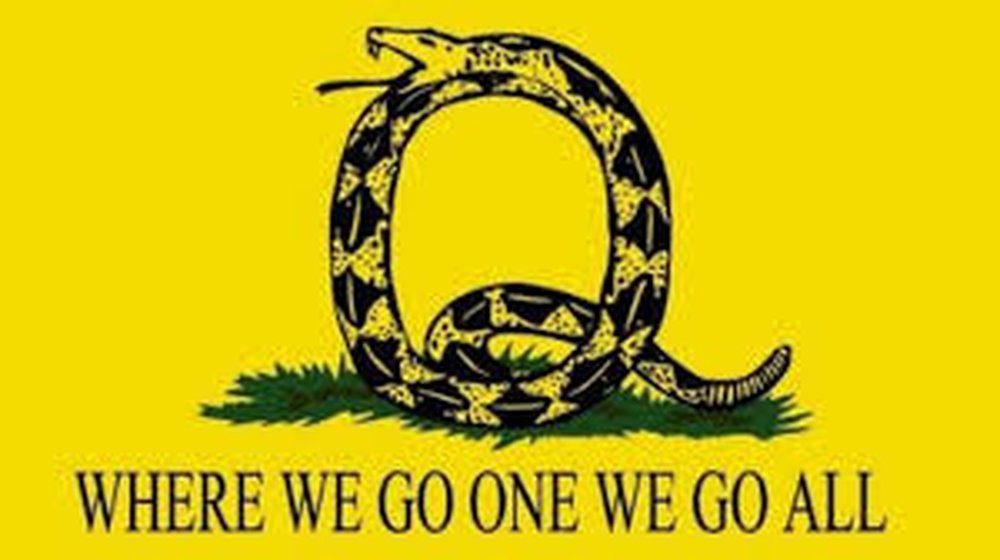
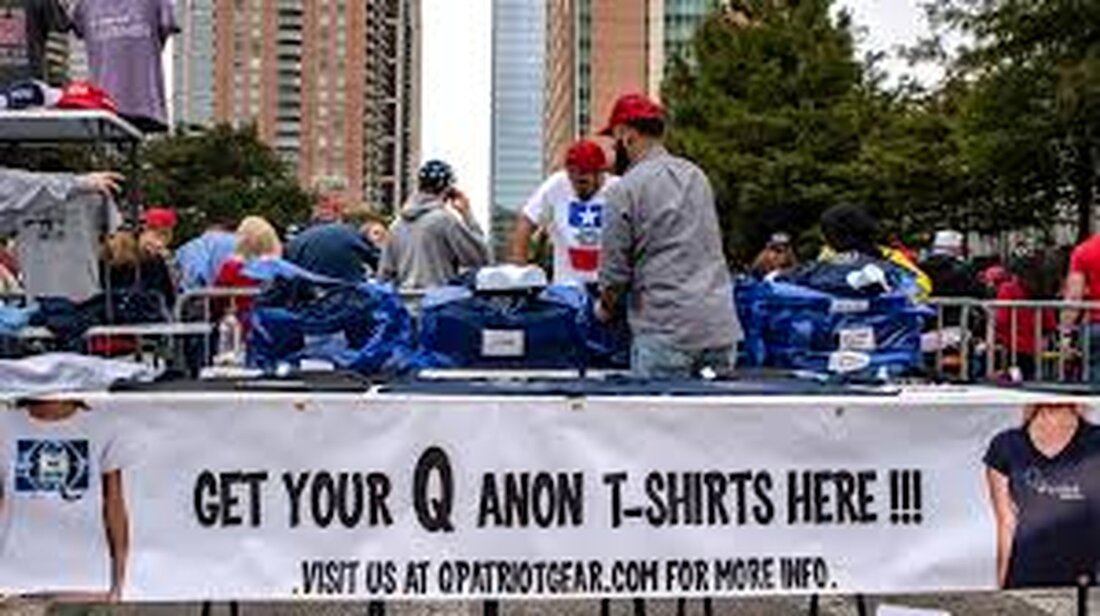
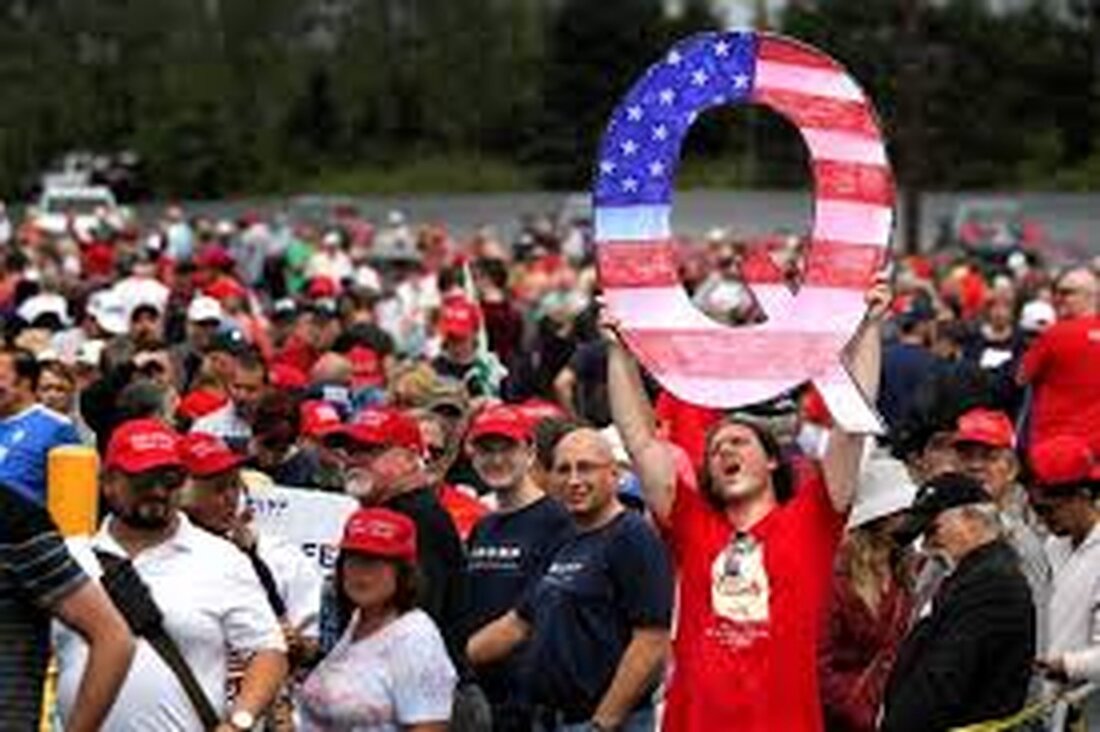



 RSS Feed
RSS Feed